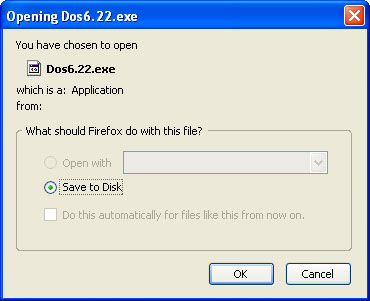Ms Dos 622 Free Download Iso

Jul 18, 2017 - Note that although I only tested this process using MS-DOS 6.22, the. Any version of MS-DOS so long as you download and use the boot disk. Ms Dos 6.22 Free Download Iso. 1/28/2018 0 Comments In this step, you will add a virtual machine that will run DOS 6.22. First, open VirtualBox At the top of the.
DOS 6.22 Bootable CD 6.22 Category: Year: 1993 Description: Fully bootable CD Rom ISO image created by ImgBurn. A large file to download, but the CD you will create will be much handier for installing DOS in Virtual PC et al. Remember to exit the installation as soon as it boots, and partition your real or virtual hard drive using the FDISK command first.
Then, set the primary partition as active and format it. Now you can reboot and continue the installation. After that, edit your new Config.sys file to say LASTDRIVE=Z if you are going to create several logical drives in an extended partition.
Manufacturer: Localization: EN OS.
As described in, I used WinSetupFromUSB to successfully create a multibootable USB that could boot into MS-DOS 6.22 - as well as installers for other version of Windows - but couldn't access any of the executables I needed on the root of the USB. As a solution to this, I'm now attempting to package the executables I need with the original DOS 6.22 boot disk ISO to create a new ISO containing everything I need. To do this, I extracted all 40 files from the original boot disk ISO using WinRAR. I then opened ImgBurn's Build mode, and then selected the 40 DOS files and my executables as the source, totalling 57 files.
I downloaded the boot floppy/diskette image for DOS 6.22 ( Dos6.22.img), and selected it as the Boot Image in Advanced > Boot Manager, with the below settings: I then added ISO9660 and UDF volume labels, and selected the Build button. The operation ran successfully, and I used WinSetupFromUSB to load the newly-created ISO onto a bootable flash drive. Inserting the flash drive booted into grub4DOS as it should have.
Booting into MS-DOS 6.22 worked, but just as it had done when I used the unaltered boot ISO, displayed only the 40 files that came packaged with DOS 6.22 by default, completely ignoring the extra files I added to the new ISO. What have I done wrong here? After a lot of work, research and guidance from @cybernard, I finally managed to accomplish the goal of packaging the legacy executables I needed into an ISO and successfully run them from within MS-DOS 6.22.
In short, my initial mistake was packaging the executables into the ISO directly. For whatever reason, this doesn't change the files available to you once booted into MS-DOS. Instead, the programs need to be 'injected' directly into the boot disk, from which an ISO can then be made. Below is a longer guide to the process, as well as the solution to the memory problem you may run into when trying to run the newly-visible programs in DOS. Note that although I only tested this process using MS-DOS 6.22, the process outlined below should be identical for any version of MS-DOS so long as you download and use the boot disk for your intended version.  What You'll Need • • (or equivalent image-burning software) • (or equivalent for your version of DOS) Injecting the Programs into the DOS Boot Disk Open the DOS 6.22 boot floppy disk using WinImage.
What You'll Need • • (or equivalent image-burning software) • (or equivalent for your version of DOS) Injecting the Programs into the DOS Boot Disk Open the DOS 6.22 boot floppy disk using WinImage.
Select Image > Change Format, and increase the size of the boot disk to 2.88 MB - this will give you the space you'll need to inject your programs into it. Drag-and-drop all the programs that you want to use in DOS onto the WinImage interface, confirming any dialogues that appear. Save the modified boot disk. If you use Save As, ensure you save it as an.img file, otherwise WinImage will default to saving it to an incompatible format. Building an ISO from the Boot Disk Open ImgBurn and select Create image file from files/folders (also known as Build mode). Don't select a source. Select the destination that you want to save the image to, along with a filename, ensuring that it's an.iso, or any other format compatible with the bootable media creator that you'll be using.